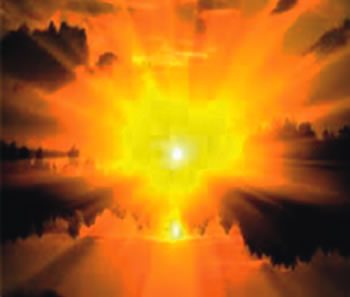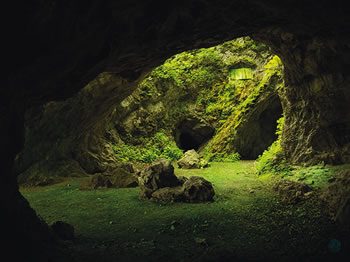Abba Father — Who Are You? (1)
‘Dwelling in Unapproachable Light’
Eucharistic Prayer 2 is probably the one most commonly chosen and Eucharistic Prayer 4 used the least. It’s a shame really. There are so many Eucharistic Prayers available – all beautiful in their own way.
Let’s ponder the four words in the title above - a phrase from the Preface of Eucharistic Prayer 4: what do they suggest about the ‘Father most holy’? We know Jesus’ words: ‘whoever has seen me has seen the Father’. What about the mystery of the God ‘dwelling in unapproachable light’?
Seeing / Not Seeing
Light is a pervading metaphor in John’s Gospel and Letters. It is applied by Jesus to Himself. It is also used by way of contrast: ‘God is light; there is no darkness in him at all’ (1 John 1:5). Yet, here the Church prays to God as Father ‘dwelling in unapproachable light.’
God’s mystery brings a light so dazzling, we are blinded by it. Here, the light doesn’t so much show us the way; we can’t get near it; it even stops us in our tracks! Light is for seeing: here we are blinded by it. For St Paul
How rich are the depths of God – how deep his wisdom and knowledge – and how impossible to penetrate his motives or understand his methods! (Romans 11:13)
This phrase in the Preface suggests two sides to our experience of God – seeing / not seeing, the positive and the negative. Let’s consider two Scripture incidents relating to this.
Read slowly Exodus 3:1-15 and Exodus 33:18-23
The first scene portrays Moses and the Burning Bush (Exodus 3:1-15). He is told to take off his shoes because the place he stands on is ‘holy ground.’ He is in the presence of divine power and mystery. Nevertheless, we see a personal interaction between Moses and God. The divine name is revealed to Moses. For a Semite, to know someone’s name is to know that person, the basis of an intimate relationship. Moses is God’s friend; he has won God’s favour and God knows him ‘by name.’
In Semitic cultures, to reveal one’s name was a form of gift. It was placing oneself in the hands of another, hence, in a way, in their power. Again, God is unique but, importantly, is a personal being who acts and who wants to have a relationship with Moses, Israel and with us. The God who discloses the divine name is vulnerable to, for instance, rejection, but is also the God who will be there for us.
The precise meaning of the divine name ‘I Am Who I Am’ (Exodus 3:14) continues to be obscure. It has something to do with the verb ‘to be.’ It denotes actively causing, for instance, creation. Jesuit theologian, John Courtney Murray suggested that the Greek version of the phrase -- Ego Eimi ho ōn -- could be translated ‘I shall be there as who I am shall be there.’ This is the God of the Covenant; the One who will always be here for us, is always faithful, has carved our names on the palm of His hand.
For all that, Moses still covered his face, afraid ‘to look at God’ (v.6).
So, let’s consider the second text of Moses on the mountain. Again, Moses is told he cannot see God’s face ‘for man cannot see me and live’ – another form of God living in ‘unapproachable light.’
It is not that God is destructive. It is rather that the reality of God is too vast for us to grasp. As we cannot look directly at the sun for too long without being blinded, so it is with God. The ‘unapproachable’ light of God is just too much for us.
Yet, divine sensitivity is still at work. God’s ‘hand’ shades Moses and, once removed, he can see God’s ‘back.’ God protects us from a reality beyond us and enables us to approach it ‘safely.’ The divine presence, its all-encompassing mystery, becomes transparent by being filtered in creation, in events and people. This is consonant with God as tender, compassionate and, while holy, intent on intimacy with us.
A final thought. We naturally desire to see God and, through faith, we already participate in the divine light. Still, our knowledge is like ‘seeing a dim reflection in a mirror’ (1 Corinthians 13:12). Thomas Aquinas uses the image of a bat; it uses radar-like soundings to find its way through its world of darkness. God, in so far surpassing our human capacities, resembles the sun, which is supremely visible, but cannot be seen by the bat because there is just too much light.
So too, in trying to understand God and God’s ‘motives’ and ‘methods’, we reach a point where we can’t see, we run out of words. We can only be silent; dumbstruck, dazzled …

 Entries(RSS)
Entries(RSS)